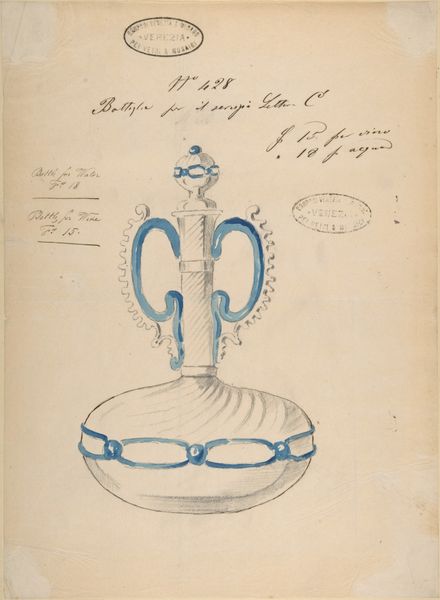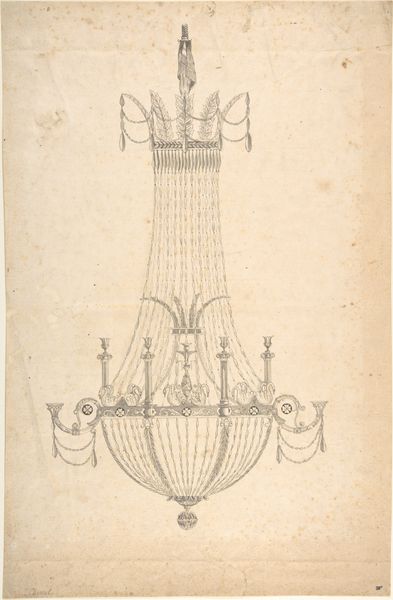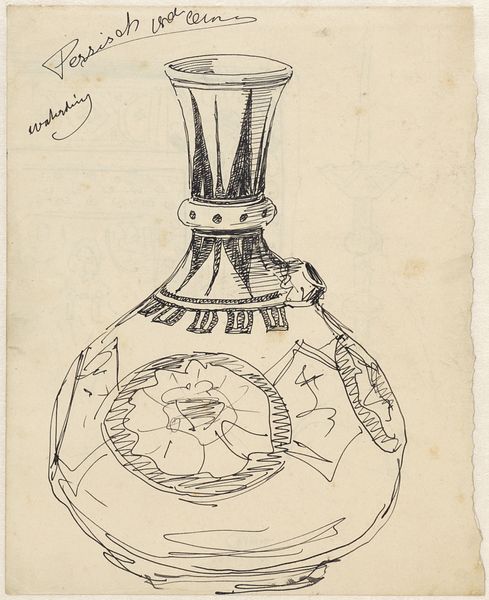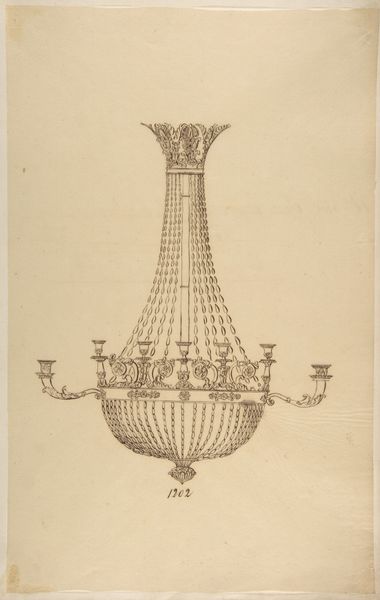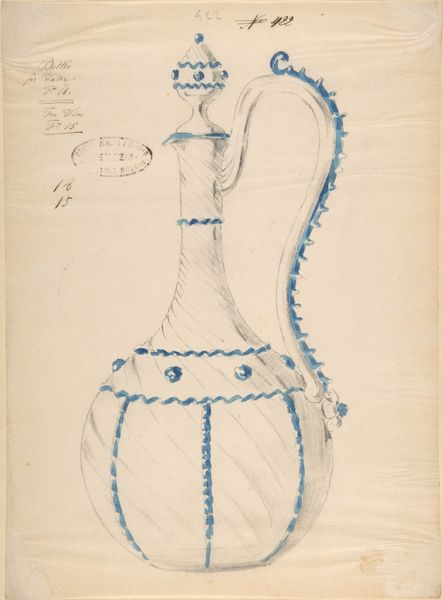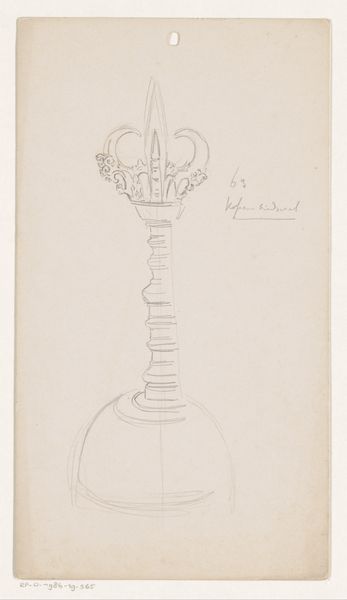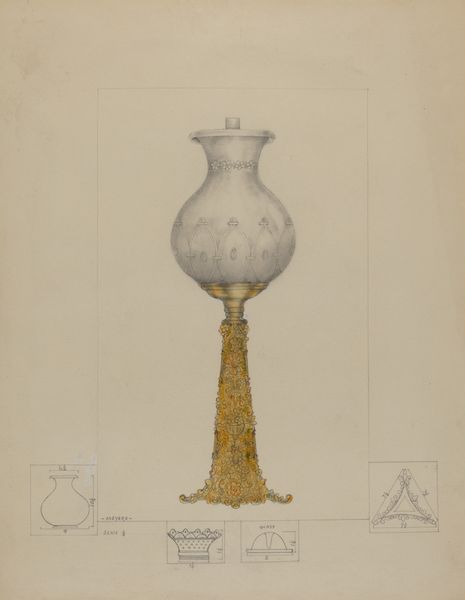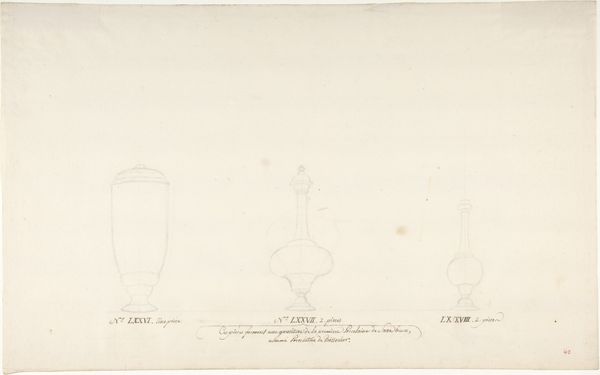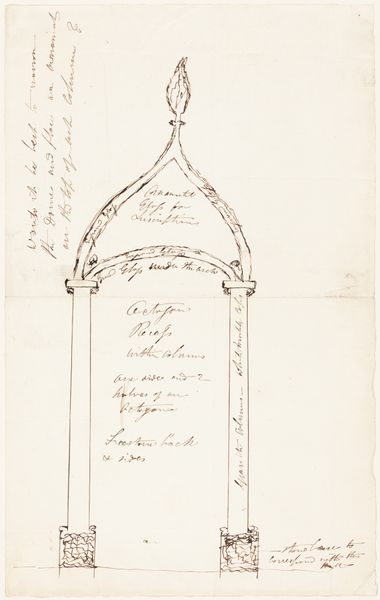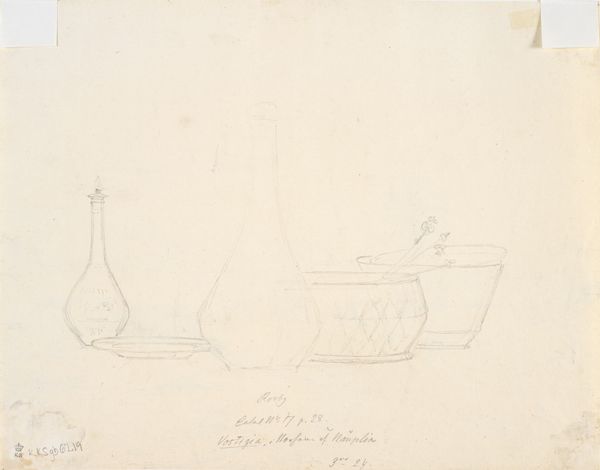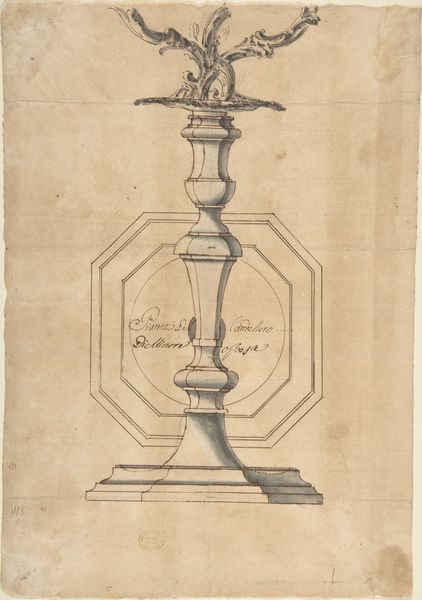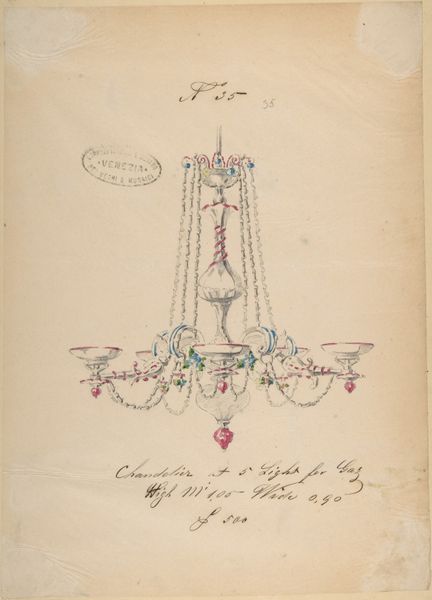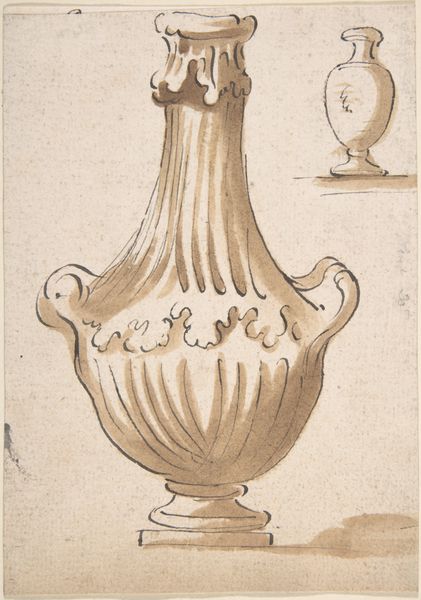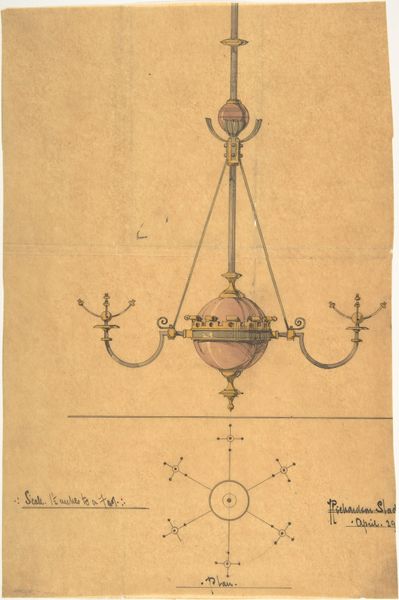
One of Twenty-Three Sheets of Drawings of Glassware (Mirrors, Chandeliers, Goblets, etc.) 1850 - 1880
0:00
0:00
drawing, print, paper, glass, ink, pencil
#
drawing
# print
#
paper
#
11_renaissance
#
glass
#
ink
#
pencil
#
decorative-art
Dimensions: 14 x 19 in. (35.6 x 48.3 cm)
Copyright: Public Domain
Curator: Before us, we have a delicate drawing titled "One of Twenty-Three Sheets of Drawings of Glassware," dating from around 1850 to 1880, and attributed to Compagnia di Venezia e Murano. It depicts design ideas on paper for ornate glass objects. What are your initial thoughts? Editor: It has a certain whimsical charm. The lightness of the pencil and ink creates a sense of ethereal fragility. It’s fascinating to see design in progress, unburdened by the weight of the finished product. Curator: Indeed. Note how the artist utilizes line to create form and texture, suggesting the transparency and reflectivity inherent in glass. The composition is rather straightforward; the design's intricate embellishments add visual complexity. We can assume it could be a goblet design from the looks of it. Editor: Thinking of the context in which this was made, Venice, in that period, was really undergoing a sort of revival of its artisanal traditions, after periods of economic uncertainty under first Napoleon and then Austrian rule. What role would these kinds of decorative artworks play for the Murano glassmakers? Curator: They represented not only functional or decorative pieces but a kind of cultural statement, harking back to the Golden Age of Venetian glassmaking, demonstrating that those skills hadn't vanished. And how might these drawing be circulated? Who exactly are their audiences? Editor: Presumably potential patrons, international buyers. Displaying sketches in such a manner was an appeal to tradition. There's definitely also a strong element of marketing and asserting dominance in decorative arts and trade with international elite in Europe. I imagine it also kept the artists’ own imaginations alive, almost as practice to prepare new ideas to present their wealthy client base. Curator: Quite so. It really embodies a convergence of aesthetics, craftsmanship, and marketing. The artist's ability to capture both the form and the potential of the material is really striking. Editor: The object embodies design’s critical function to shape commerce, aesthetic values and international identity. Ultimately, the work on paper is interesting for these forces working at play in 19th century Venice. Curator: Well put! A valuable observation considering design in the industrial revolution.
Comments
No comments
Be the first to comment and join the conversation on the ultimate creative platform.
